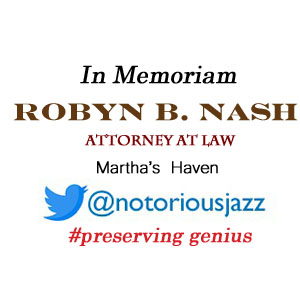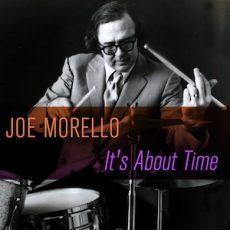
Daily Dose Of Jazz…
Joseph Albert Morello was born July 17, 1928 in Springfield, Massachusetts of French and Italian ancestry. Suffering from partial vision from birth, he devoted himself to indoor activities. He began studying the violin when he was six and three years later, he was a featured soloist with the Boston Symphony Orchestra, playing Mendelssohn’s Violin Concerto, and again three years later.
By fifteen he met the violinist Jascha Heifetz, decided that he would never be able to equal Heifetz’s sound and switched to drumming. He first studied with show drummer Joe Sefcik and then with educator and author George Lawrence Stone. He was so impressed with Morello’s ideas that he incorporated them into his next book. Further study led him to Radio City Music Hall percussionist, Billy Gladstone.
Moving to New York City, he worked with Johnny Smith, Tal Farlow, Stan Kenton, Phil Woods, Sal Salvador, Marian McPartland, Jay McShann, Art Pepper, and Howard McGhee. After a period of playing in McPartland’s trio, Joe declined invitations from Benny Goodman and Tommy Dorsey, favoring a two-month tour with the Dave Brubeck Quartet in 1955. This turned into a performing and recording residency that lasted for well over a decade, departing in 1967.
As an educator Morello became an in-demand clinician, teacher and bandleader, whose many of his former students went on to become well known in their chosen genres. He authored several drum books, including Master Studies, published by Modern Drummer Publications, made instructional videos and received many awards, and was inducted into several Halls of Fame.
Drummer Joe Morello, who appeared on over 120 albums, died at his home in Irvington, New Jersey on March 12, 2011 at the age of 82.
More Posts: author,bandleader,drums,educator,history,instrumental,jazz,music

Daily Dose Of Jazz…
Matt Lavelle was born on April 11, 1970 in Paterson, New Jersey and began his music career with Hildred Humphries, a swing era veteran who played with Count Basie and Billie Holiday.
Playing in ensembles led by Sabir Mateen since 2002, three years later Matt began study with Ornette Coleman. He has been a member of the Bern Nix Quartet since 2010 and recorded with Giuseppi Logan the same year.
In 2011 he created the 12 Houses Orchestra. Lavelle is also a visual artist inspired by his Grandfather Fritz Kluber. He is author of the Substack No Sound Left Behind. Matt published a book titled New York City Subway Drama and Beyond, in 2011. In 2013 he published a short story titled The Jazz Musician’s Tarot Deck.
He has recorded nineteen albums as a leader, and another forty-five as a sideman with Nix and Logan as well as Sumari, Eye Contact, Daniel Carter, Bern Nix, Giuseppi Logan, Matana Roberts, William Hooker, Francois Grillot, Steve Swell, Sabir Mateen, Ras Moshe, Assif Tsahar, William Parker, Charles Waters, Barry Chabala, Earth People, Allen Lowe, D3, Julie Lyon, Tom Cabrera, The Cooperative Sound, Stars Like Fleas, Eric Plaks, and Pete Dennis.
Trumpeter Matt Lavelle, who also plays flugelhorn, alto and bass clarinet, continues to perform, record and tour.
More Posts: author,bandleader,clarinet,flugelhorn,history,instrumental,jazz,music,trumpet
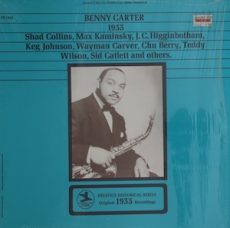
Daily Dose Of Jazz…
Johnny Simmen was born Hans Georg Simmen on April 7, 1918 in Brugg, Switzerland. He learned to play the piano for seven years, but never performed publicly. After a Louis Armstrong concert at the Zurich Tonhalle in 1934, he became fascinated with jazz. In 1935, he founded the first jazz club in Zurich, Switzerland where jazz enthusiasts could meet, where recording evenings were held, and lectures were given.
As early as the start of the Forties, Simmen was reporting from Switzerland for the American magazine Down Beat. Since he felt his high school English skills were inadequate, he took lessons and obtained the Cambridge Certificate of Proficiency in 1942, enabling him to be fully effective as a Swiss correspondent . He was able to resume his work for Down Beat in the first two years after the war.
He published numerous articles in journals such as the Bulletin du Hot Club de France, the British Melody Maker, Down Beat and the Canadian Coda. He lectured internationally on jazz and was friends with Bill Coleman, Teddy Wilson, Joe Turner and Horace Silver. He was considered one of the most knowledgeable jazz writers, specializing in musicians of the pre-bop era. Johnny’s knowledge of piano technique made his articles on jazz pianists very concise.
Simmen wrote liner notes for new editions, beginning with the prestige album Benny Carter in 1933. Starting in 1979, he produced recordings with important musicians of the 1930s. Most notably, in 1994, he released a whole series of recordings on Best of Jazz .
Holding down several day jobs, Johnny was a civil servant for the city of Zurich from 1943. Three years later Johnny joined Swissair, where as the exclusive designer of the in-flight jazz programs to entertain Swissair passengers until 1987. He delivered programs every two months, initially lasting one hour, later one and a half hours, and finally two hours.
Author and music producer Johnny Simmen died on September 23, 2004 in Zurich, Switzerland.
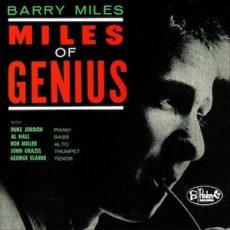
Daily Dose Of Jazz…
Barry Miles was born Barry Miles Silverlight on March 28, 1947 in Newark, New Jersey and grew up in North Plainfield, New Jersey. In 1956 he joined the musicians union at age nine as a child prodigy on drums, piano and vibraphone appearing with Miles Davis and John Coltrane among other talents of the day. He appeared live and on television shows including To Tell the Truth, Dick Van Dyke’s variety show, and The Andy Williams Show.
In 1961 at age fourteen he made his solo artist debut recording, “Miles of Genius”, as drummer and composer with sidemen Al Hall and Duke Jordan. Miles continued to perform with his own band in the early 1960s in which he composed the material that enabled up and coming talents such as Woody Shaw, Eddie Gómez and Robin Kenyatta to display their talents.
While a student at Princeton University he concentrated on his piano playing, recording a live album in 1966 entitled Barry Miles Presents His Syncretic Compositions. He followed in 1969 with the eponymously titled album, Barry Miles, incorporating electric instruments.
The Seventies saw him recruiting his brother Terry Silverlight on drums along with guitarists Pat Martino and John Abercrombie to record his White Heat album, which is regarded as one of the pioneering fusion jazz recordings. For the next decade, Miles recorded several albums in which he developed the principle of fusing styles together in jazz.
In the late 1970s and throughout the 1980s, Barry went on to work as Roberta Flack’s musical director for a stint that lasted fifteen years. During that time he composed, produced and recorded songs that Flack recorded in the film Bustin’ Loose, and on her album Oasis. He established a long-lasting relationship with Al Di Meola as his performing, recording and co-producing keyboardist.
He wrote the instruction book, “Twelve Themes With Improvisations”, and is currently out of print. In 2013, he released Home and Away, Volume One, his first album as a leader in 27 years. Pianist, record producer and author Barry Miles continues to perform, record and produce.
More Posts: author,bandleader,history,instrumental,jazz,music,piano,record producer
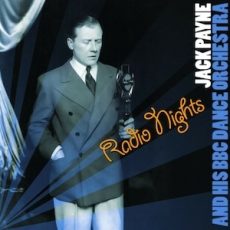
Daily Dose Of Jazz…
Jack Payne was born John Wesley Vivian Payne on August 22, 1899 in Leamington Spa, Warwickshire, England. He is the only son of a music publisher’s warehouse manager and it wasn’t until he was serving in the Royal Flying Corps that he played the piano in amateur dance bands. Towards the end of World War I, he led dance bands for the troops and was part of a voluntary group The Allies Concert Party that performed to wounded soldiers convalescing around Birmingham.
He played with visiting American jazz bands at the Birmingham Palais during the early 1920s, including the Southern Rag-a-Jazz Orchestra in 1922, before moving to London in 1925. He played in a ten-piece band which became the house band at London’s Hotel Cecil. Three years later Payne became the BBC Director of Dance Music and the leader of the BBC’s first official dance band.
After leaving the BBC in 1932 he returned to playing hotel venues and switched labels to Imperial, followed by Rex from 1934. Payne took his band on nationwide tours and made a couple of films, composed and published waltzes, and recorded jazz working with Garland Wilson.
>Returning to the post of Director of Dance Music at the BBC until 1946. Bandleader and composer Jack Payne, who authored two autobiographies, died in Tonbridge, Kent, England on December 4,1969, aged 70.
More Posts: author,bandleader,composer,history,instrumental,jazz,music



